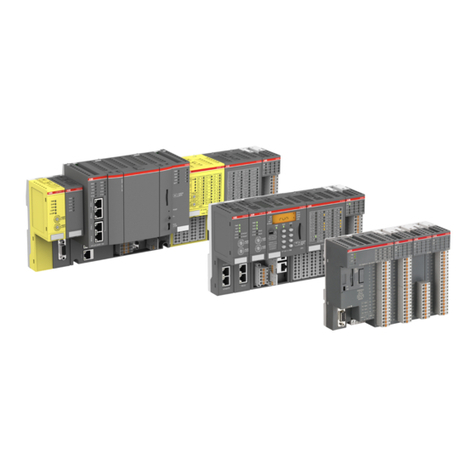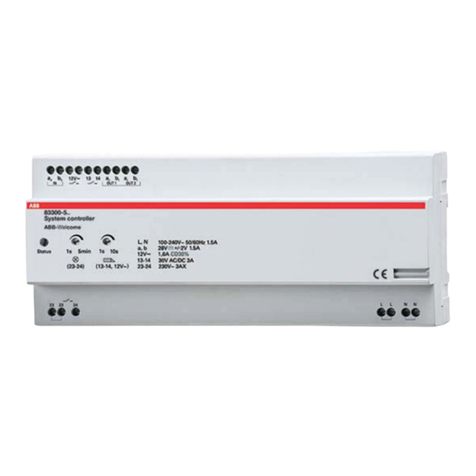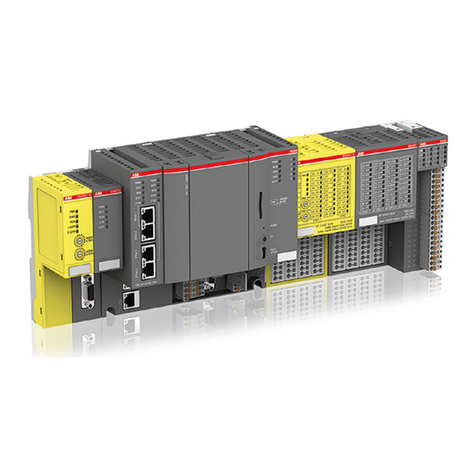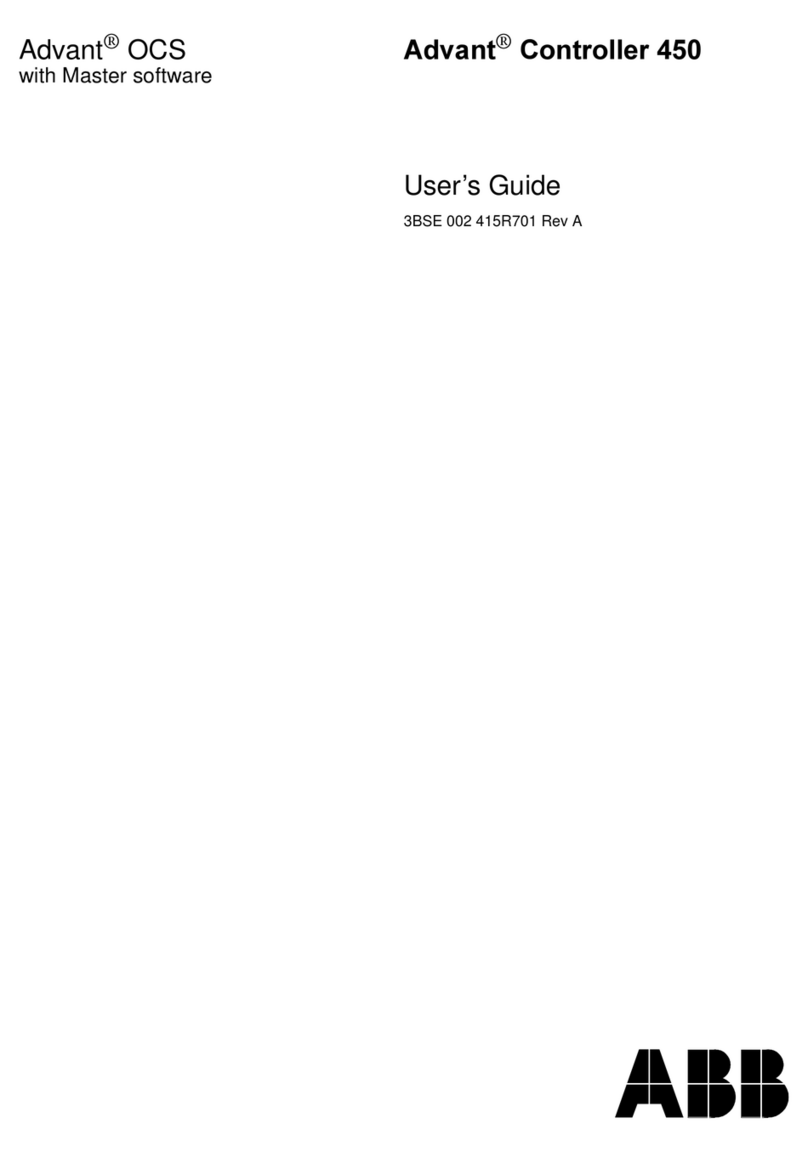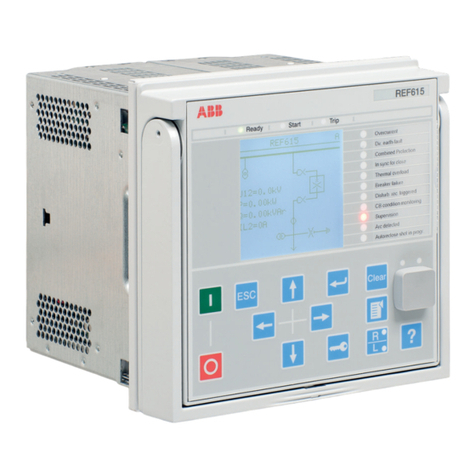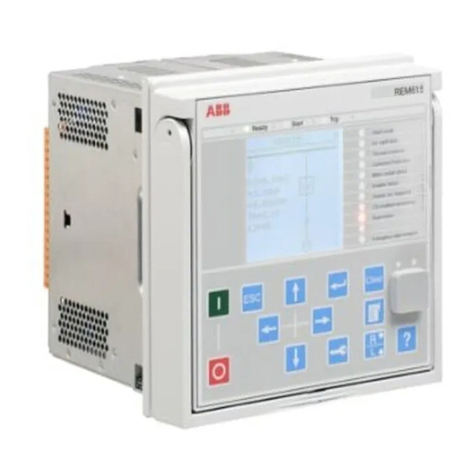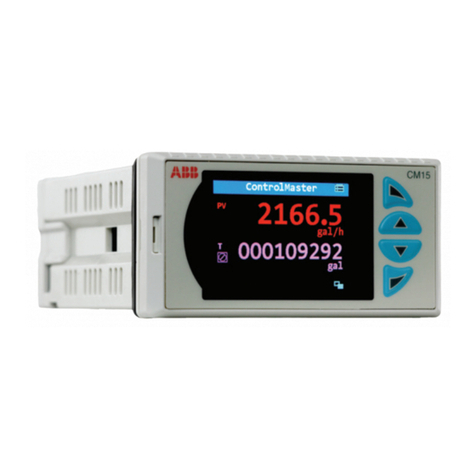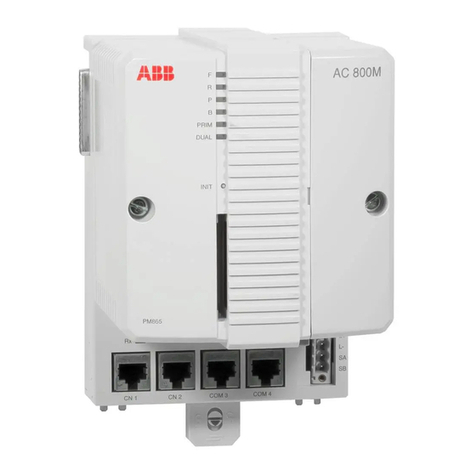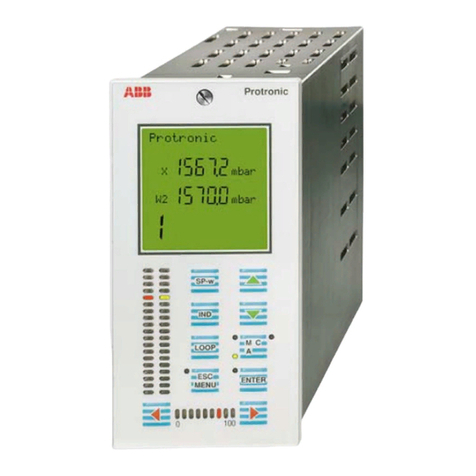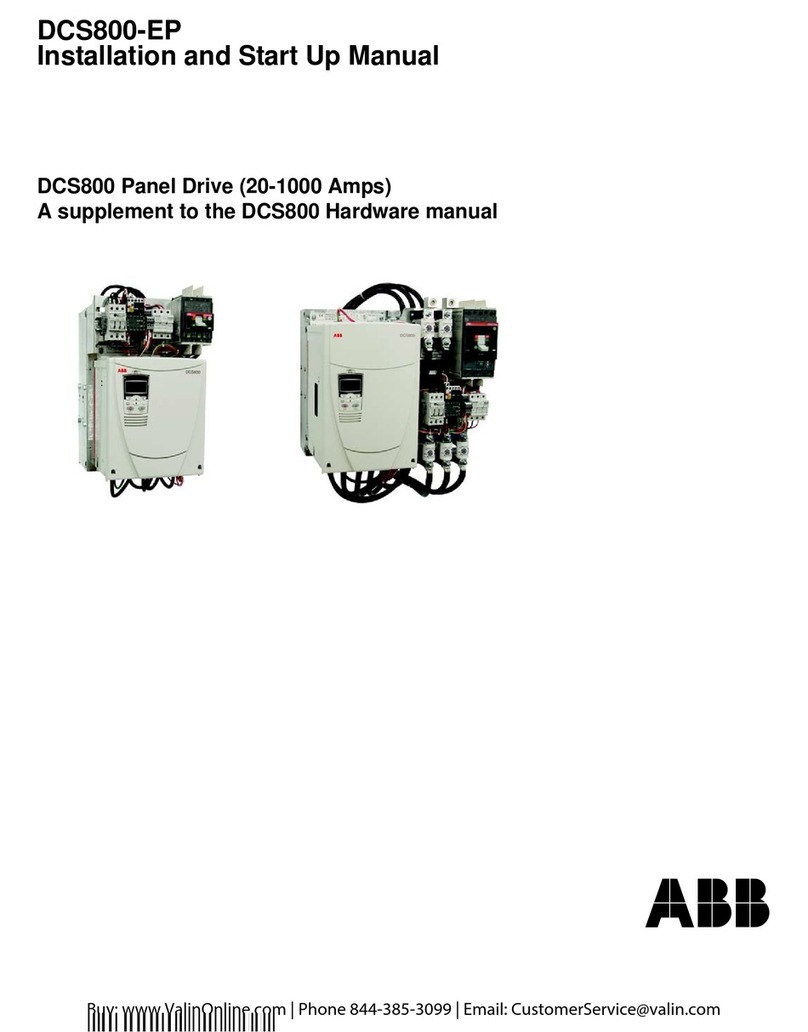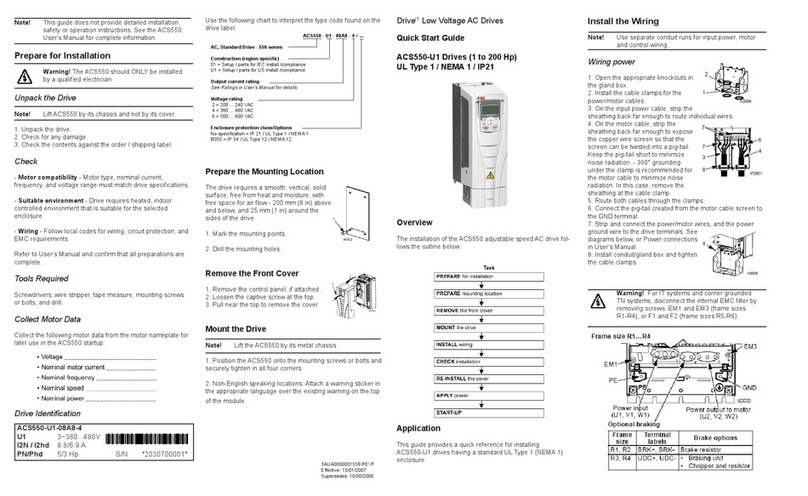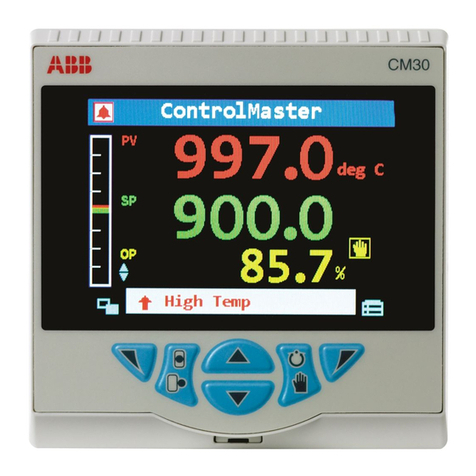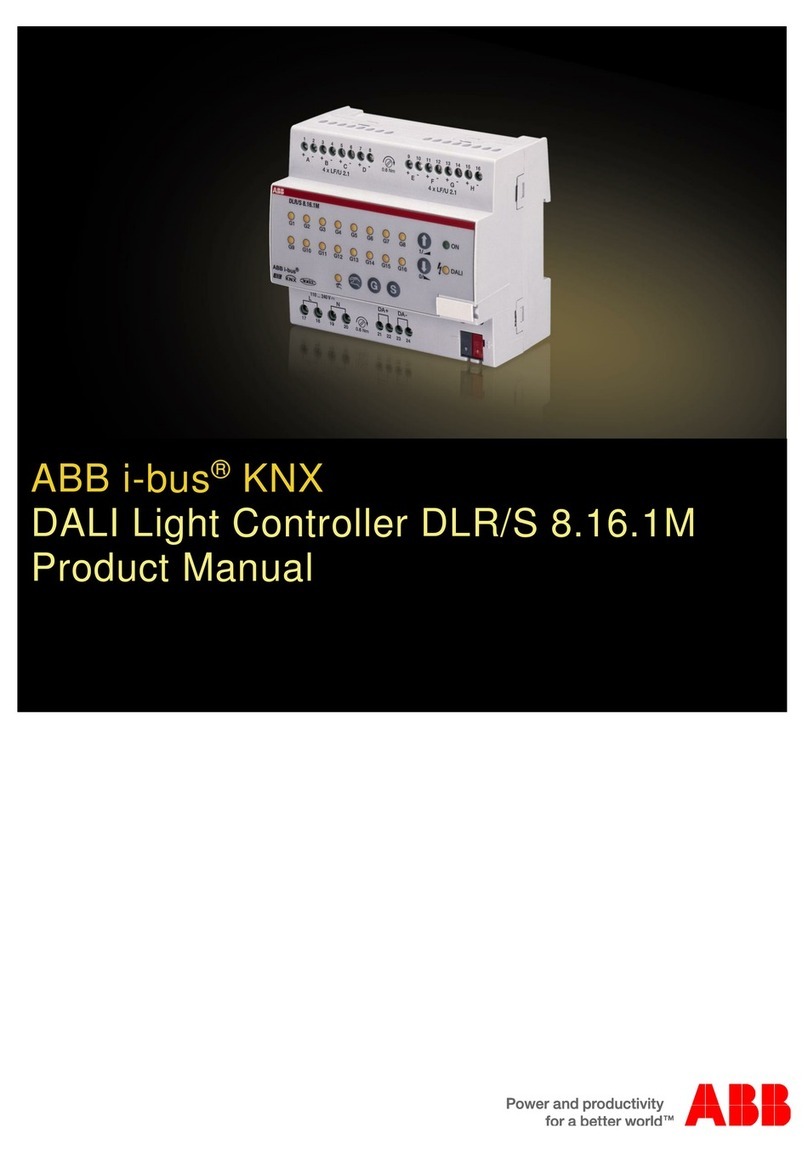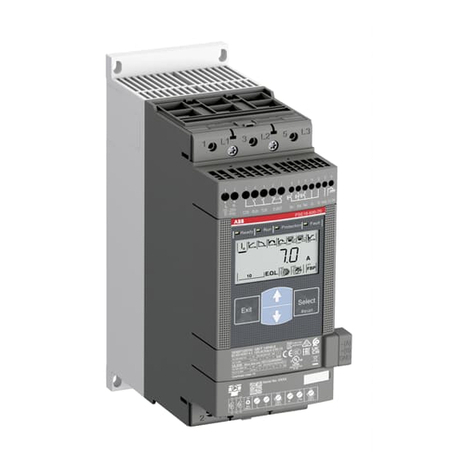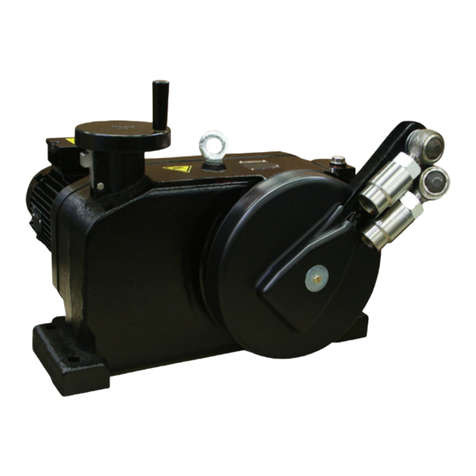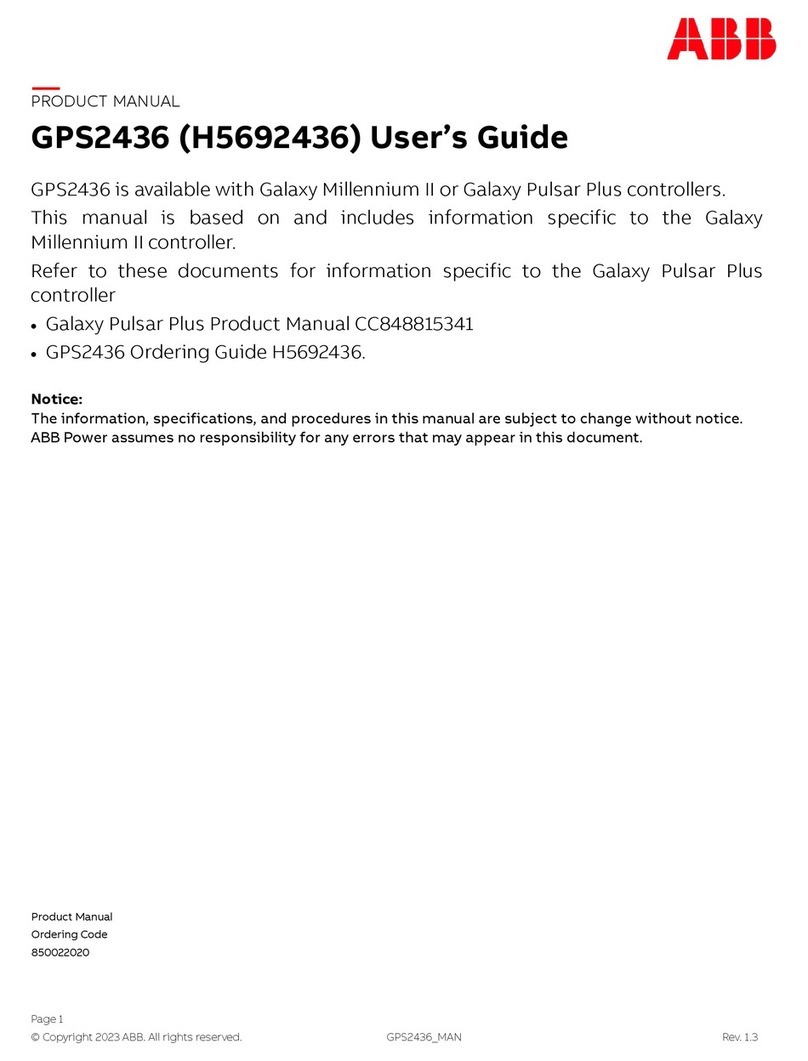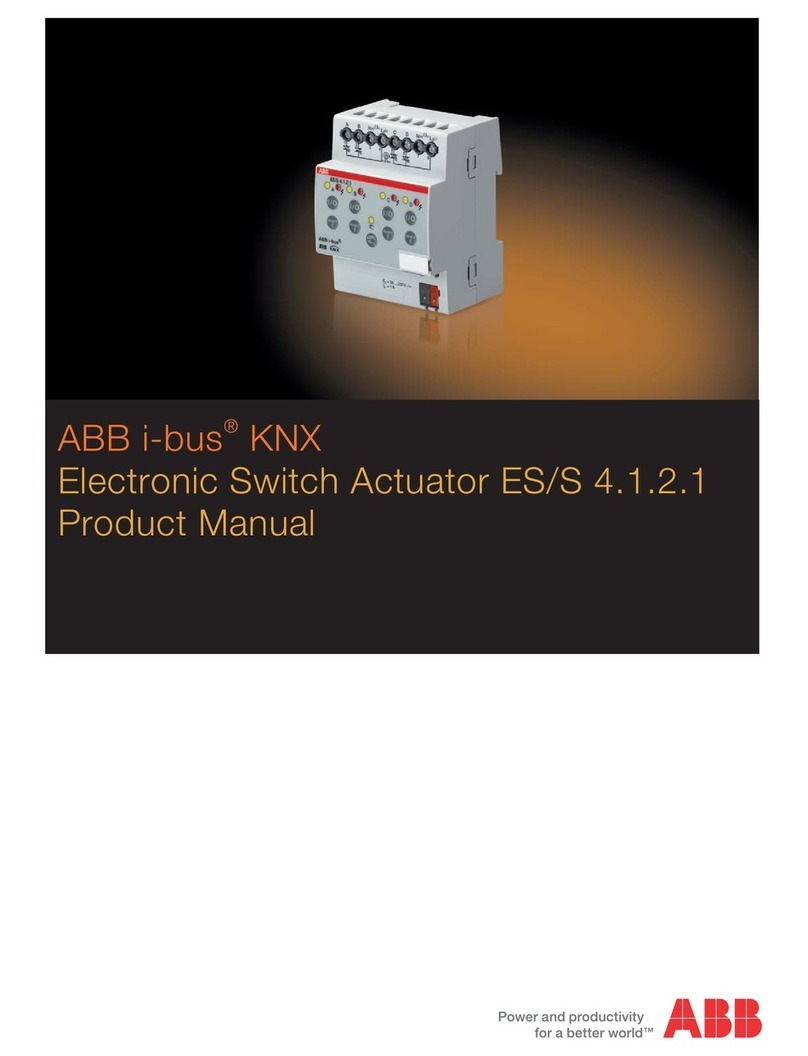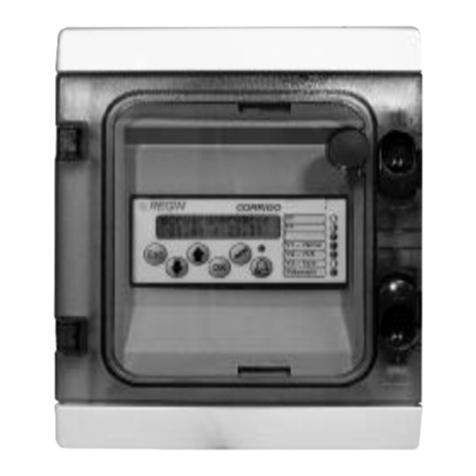
1SFC132374M0201 3
1 Overview
This document aims to describe the installation and configuration process of the MTQ22-FBP Modbus TCP
adapter module. Modbus is a master-slave protocol and only one device can transmit on the line at any time. The
master (which in most cases is a PLC) manages the exchanges and only it can take the initiative. It interrogates
each of the slaves in succession and no slave can send a message unless it is invited to do so. The master repeats
the question when there is an incorrect exchange, and declares the interrogated slave absent if no response is
received within a given time period. If a slave does not understand a message, it sends an exception response to
the master who may or may not repeat the request.
The adapter will be used to enable Modbus TCP communication between an ABB PSE softstarter and a Modbus
master over an IP network. The TCP Modbus communication protocol differs from the other Modbus versions
through the use of TCP/IP communication as a wrapper for the Modbus data. Modbus RTU messages are sent
over an IP network. The use of IP datagrams removes the need for slave addresses since all slaves use a unique
IP address to enable IP communication. However, The MTQ22-FBP still uses Modbus RTU to communicate
with the PSE which require the slave ID to match between the MTQ22-FBP and the PSE, as explained in section
3.2.
The document starts with technical information regarding the required devices and a description of how to
connect them to enable Modbus TCP communication. The third chapter explains how to configure the PSE and
MTQ22-FBP software, Fieldbus Control, Slave address, IP address and other important parameters are
configured with detailed instructions. The fourth chapter presents the MTQ22-FBP data registers, used to read or
write data to the connected PSE devices. In case of any TCP Modbus connection problems, chapter 5 explains
the meaning of the MTQ22-FBP diagnostic LED indicators. This manual is written specifically for Modbus TCP
and will not cover other fieldbus protocols or other devices then ABB Softstarters type PSE18…PSE370. For
more detailed information regarding warranty, service, type designation and other product specific information
for the associated devices, see respective manual.
Requirements
To connect the PSE Softstarter to a fieldbus system, the following accessories are required:
•ABB FieldBusPlug Accessory (FBPA)
•ABB MTQ22-FBP (Modbus TCP)
•Cable for bus connection (CDP19-FBP .100)
•Micro USB cable
•ABB PSE softstarter
•Software for MTQ22-FBP set-up (ABB Config Tool)
•PLC or another Modbus TCP master
